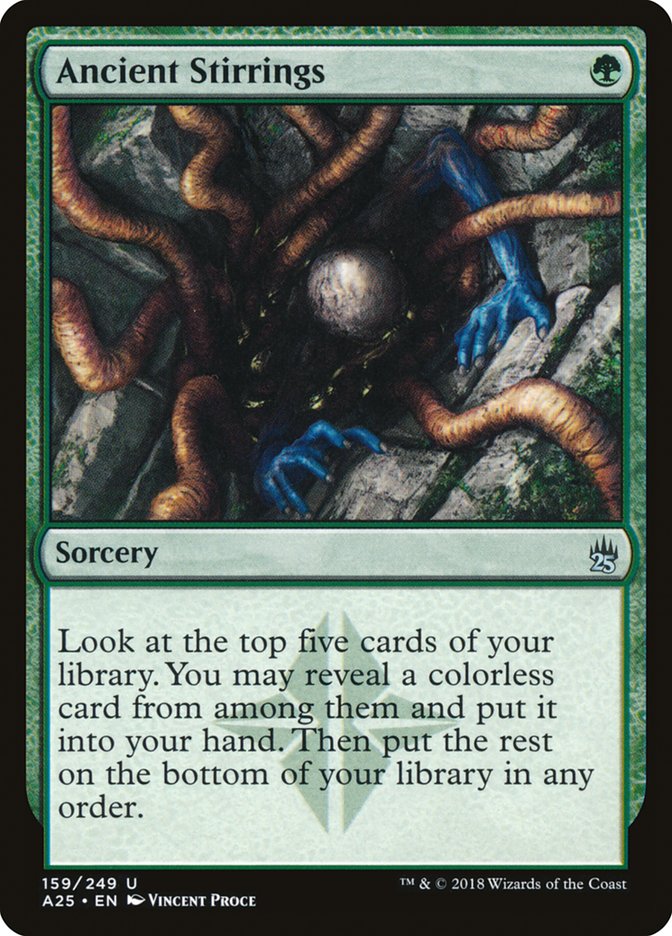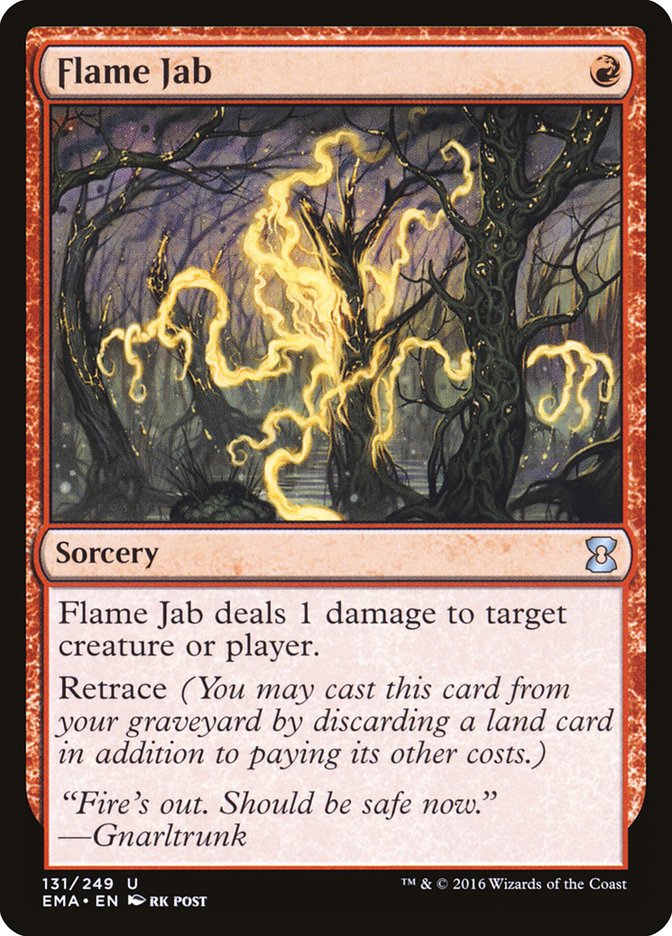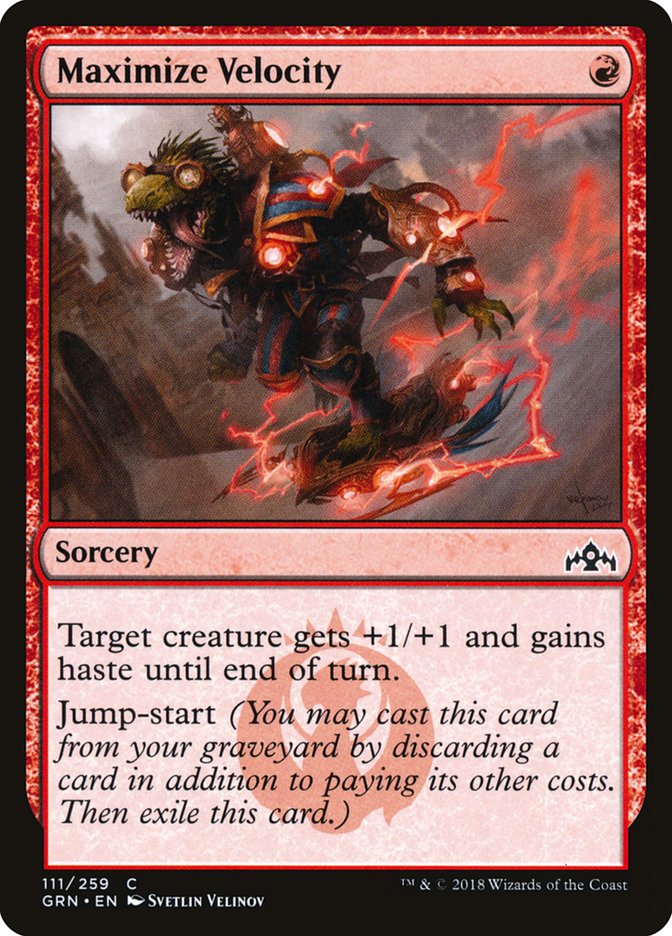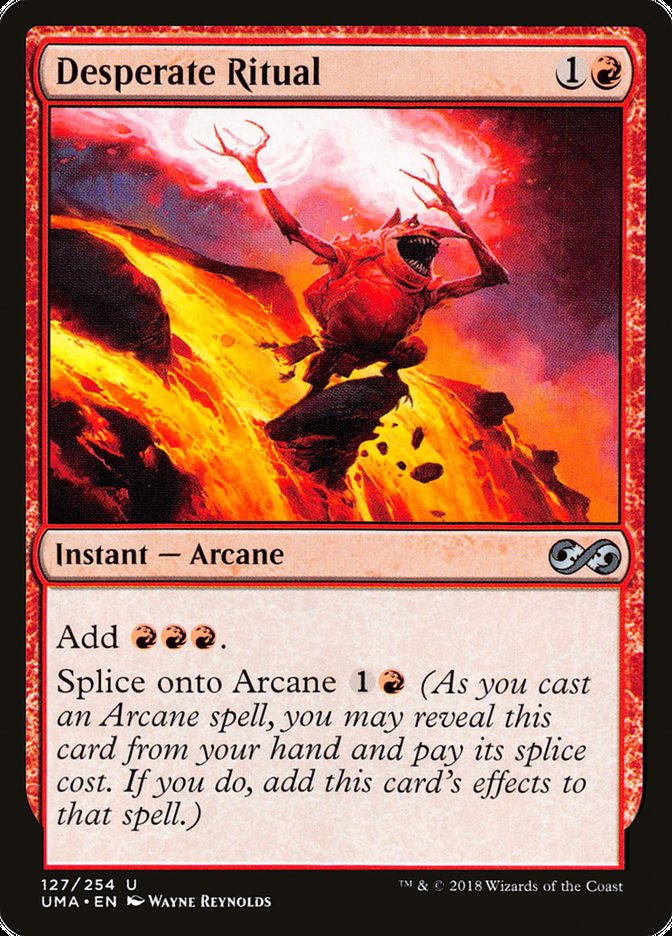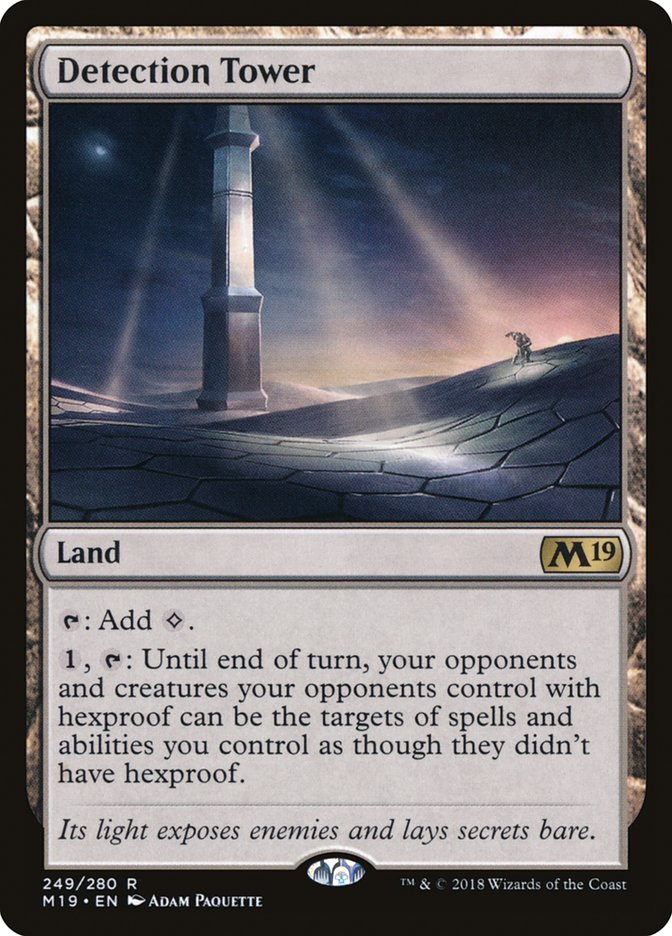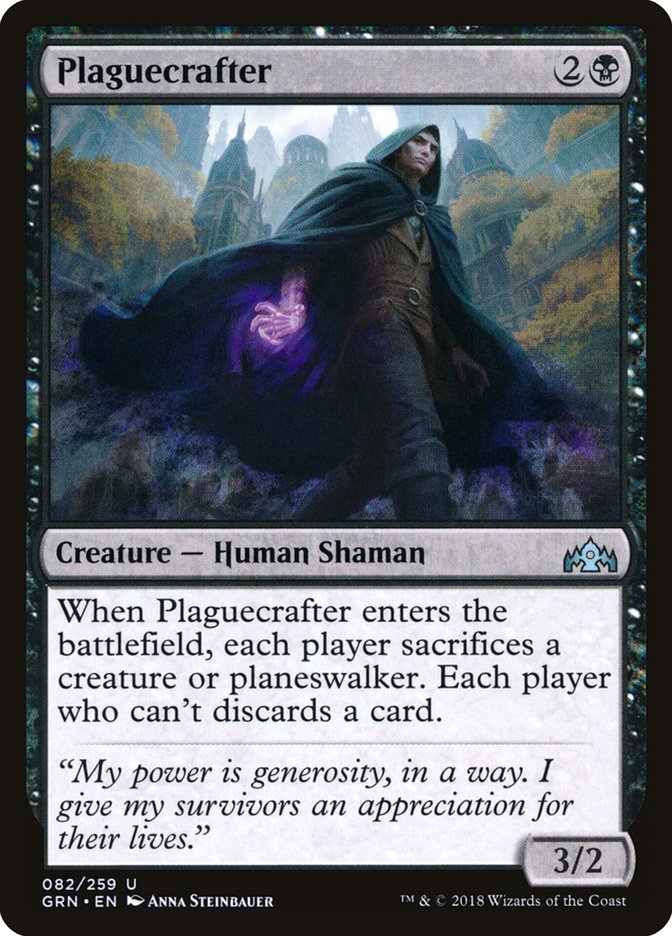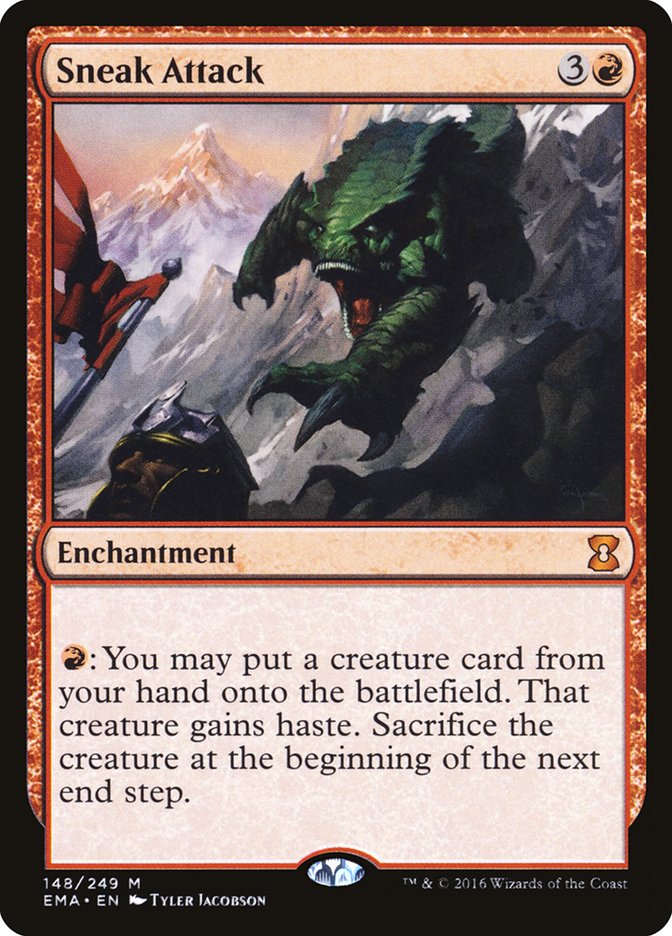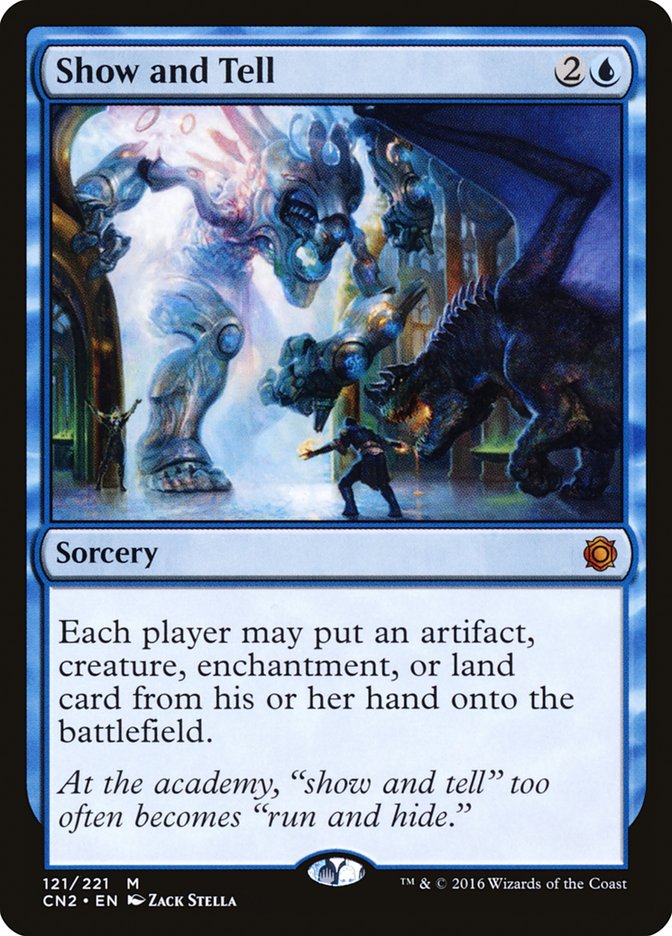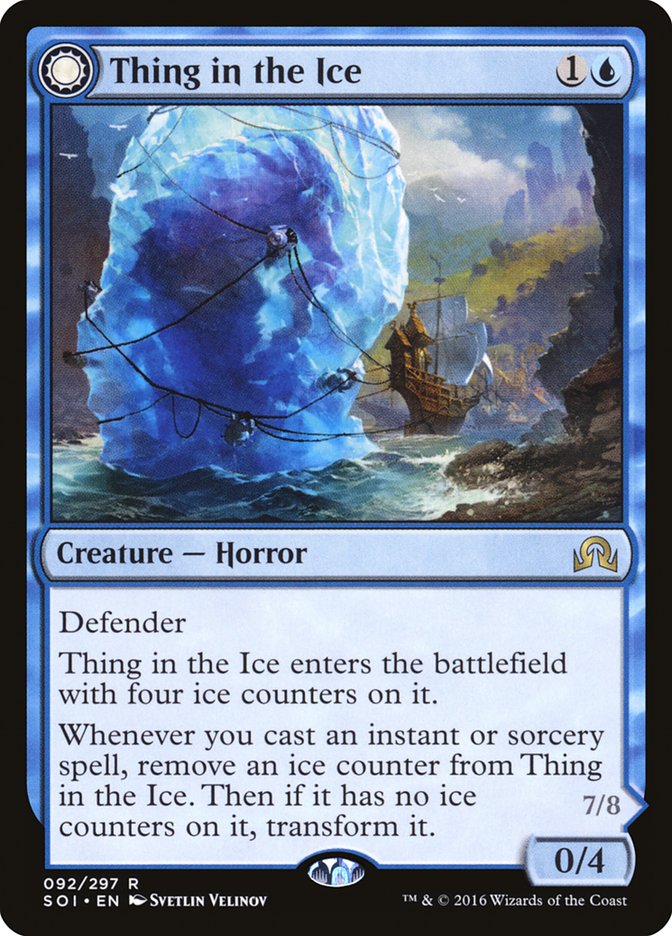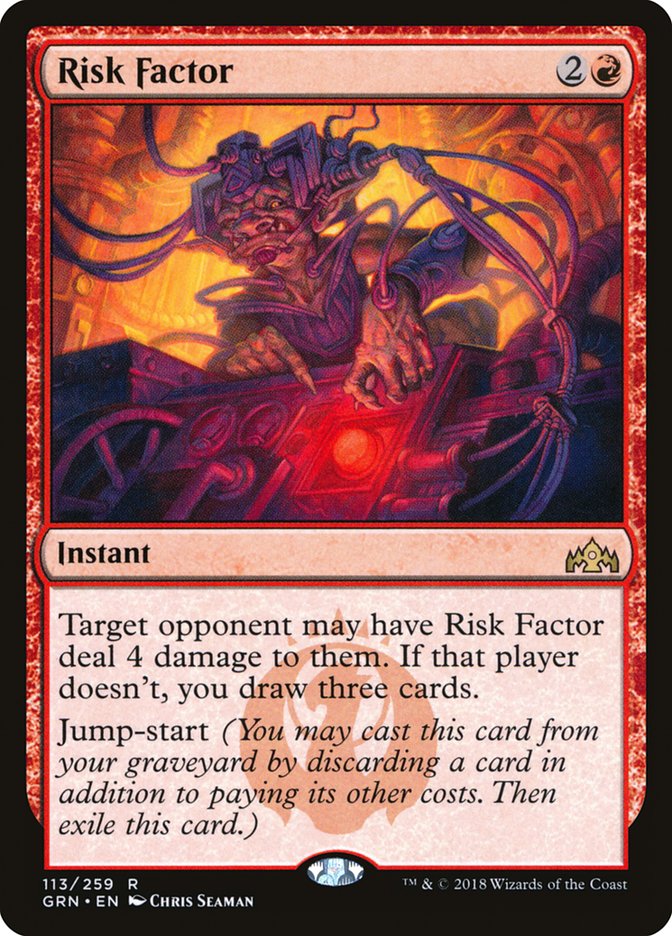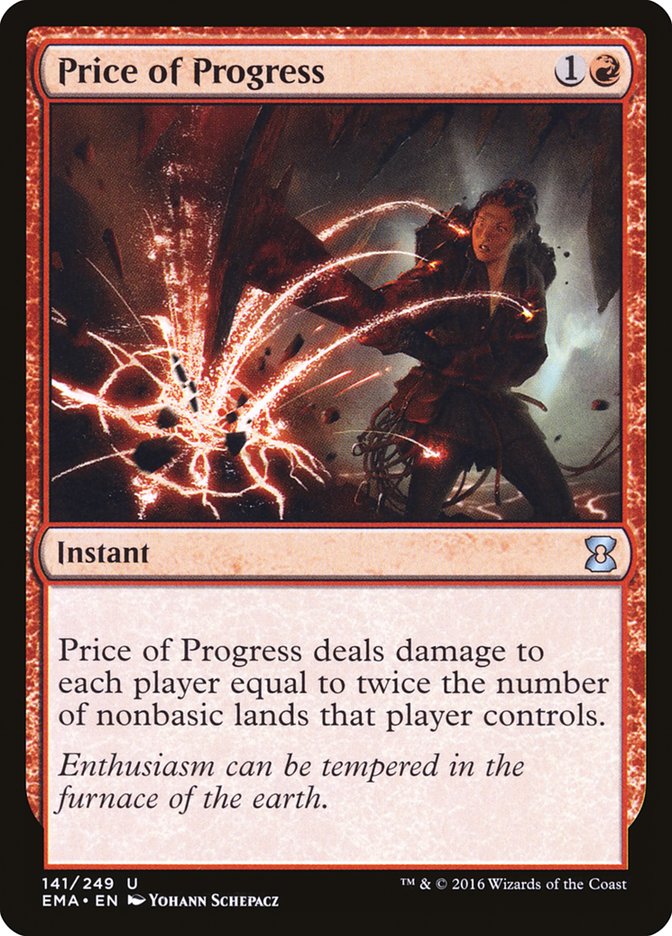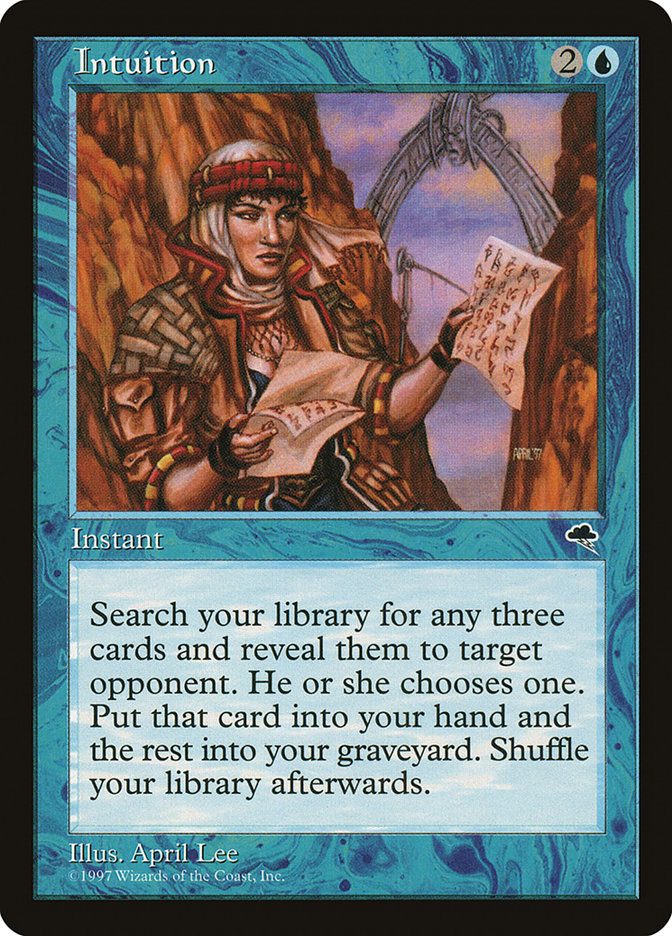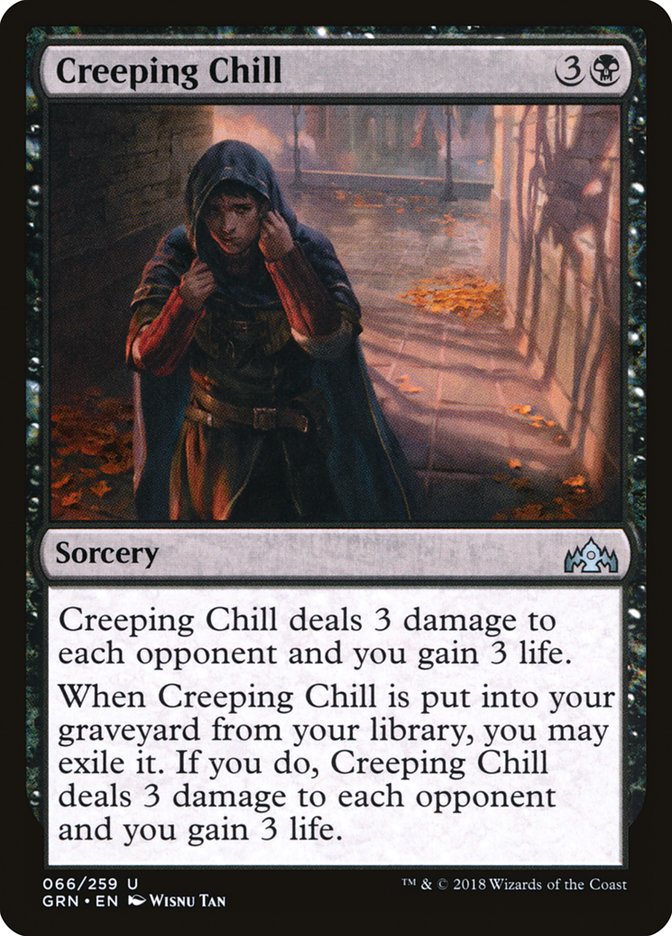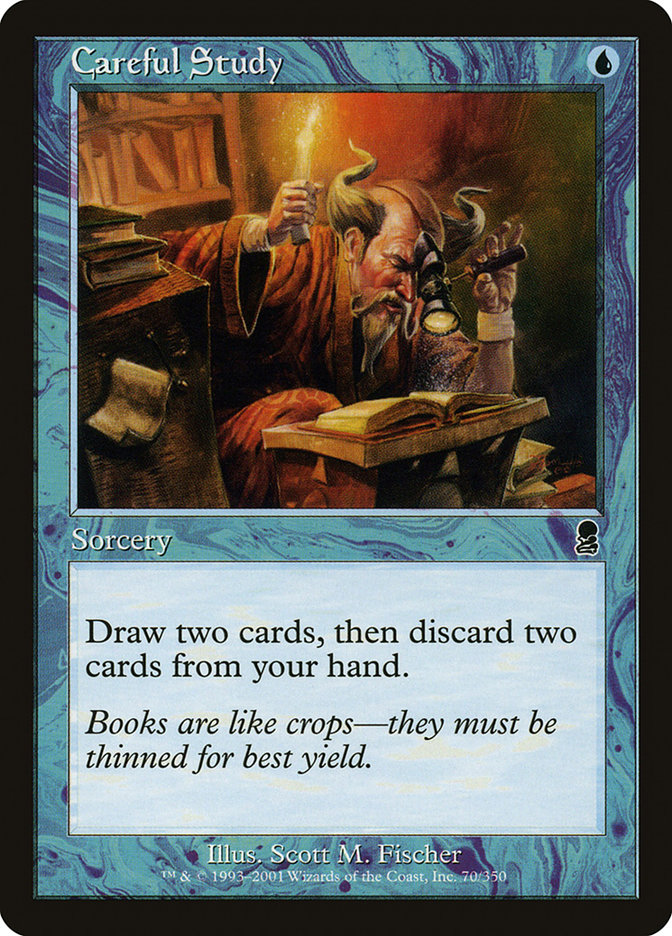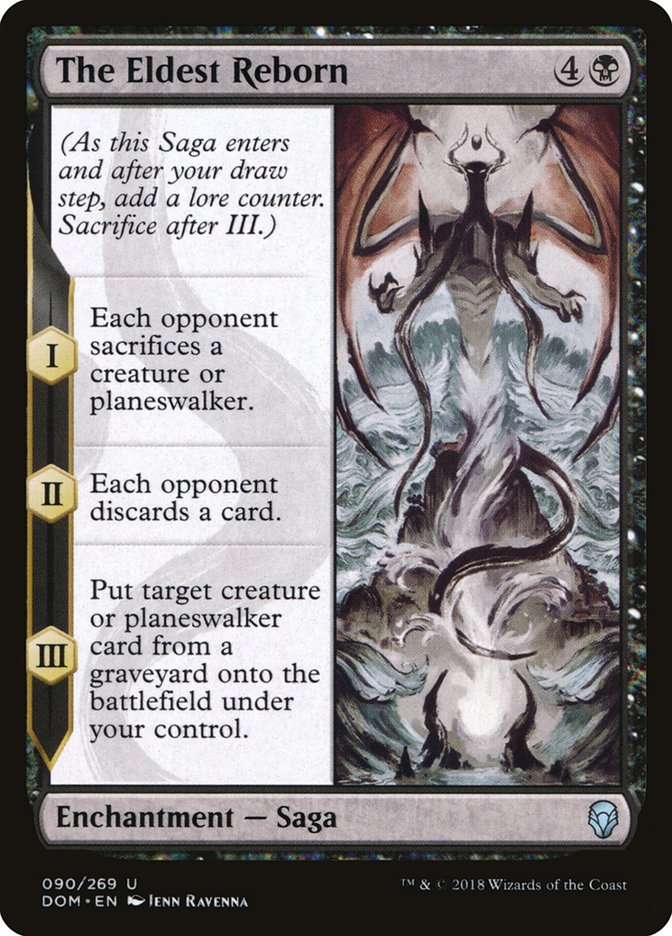Technology is the fun part of deckbuilding. Maybe it’s uncovering an
under-utilized sideboard card, finding a transformational sideboard plan,
or a missing piece from the metagame that causes everything to shift.
Finding this technology and seeing how far I can push it is exactly what
keeps Magic interesting for me.
Let’s start with Modern since it’s the most relevant format at the moment.
Modern
The only consistent thing about Modern is how much it changes and how
things stay the same despite that. While there’s the occasional influx of
new archetypes and metagame shifts, the same decks are around, just in
varying degrees. Ironworks and Dredge were what people were supposed to be
targeting, yet they performed admirably at the Invitational last weekend.
Faithless Looting and Ancient Stirrings prop up crazy strategies that don’t
play traditional Magic. While Ancient Stirrings has a deckbuilding
restriction, you can’t really say the same thing about Faithless Looting.
All it wants you to do is play cards that use the graveyard, give you extra
resources, or benefit from being discarded. Basically every card in Modern.
Arclight Phoenix is the newest breakout card in Modern and has consistently
put two copies into various Top 8s since. Both Phoenix decks in the
elimination rounds of the Invitational got 3-0ed by Ironworks decks. That’s
unacceptable. Thing in the Ice is a powerful card that helps the Phoenix
decks in otherwise medium matchups like Humans and Bant Spirits, but it
doesn’t help in your truly bad matchups, such as decks that are capable of
killing on Turn 3. While Izzet Phoenix might be the best performing Phoenix
deck so far, I don’t imagine that will continue to be the case.
Obviously I’ve been chasing the
Dragon
Phoenix, and I don’t see that changing anytime soon. While I’ve been trying
to find the best version, other folks have been putting up great finishes
with the versions that have already been refined.
Creatures (12)
Spells (48)

The biggest thing missing from Marshal’s list is Eidolon of the Great Revel
or any other significant hate card against Ironworks. Your “burn ’em out”
plan is about a turn slower than their goldfish speed, so not playing any
hate isn’t a viable option.
Desperate Ritual provides some help in the goldfish department, but we
haven’t really seen any copies in these decks since they were playing
Runaway Steam-Kin. Playing Desperate Ritual without Steam-Kin is odd, but
it does make it much easier to bring back Arclight Phoenix, plus it turbo
charges your Bedlam Revelers. After sideboard, that’s a liability in the
face of graveyard hate, but maybe the extra speed is worth it.
If I were playing a Modern tournament tomorrow and winning was my priority,
this is what I’d play.
Creatures (14)
Lands (2)
Spells (44)

At the end of the day, playing Tormenting Voice over Goblin Lore increases
your consistency, and having Lava Spikes and additional burn spells is a
better plan than trying to spike Hollow One off Burning Inquiry. I did kill
on Turn 3 twice last weekend, but that’s not exactly a necessity right now.
This list loads up on one-drops, including Soul-Scar Mage, in the hopes of
starting the aggression early. Bedlam Reveler allows you to function as a
control deck in sideboard games against creature decks. Gut Shot is your
main way to bring back Arclight Phoenix on the cheap and it does that job
much better than Flame Jab, Maximize Velocity, or Desperate Ritual.
The sideboard could go a few different ways, but it’s all about what you
expect to play against. I didn’t play any graveyard hate last weekend,
which served me well and allowed me to be maximally prepared against the
Aether Vial and big mana decks. However, a well-rounded sideboard is likely
a better place to be, at least to start with.
Bant Spirits has largely supplanted Humans as the Aether Vial deck of
choice, which is understandable. Flying, Spell Queller, a greater spread of
mana costs, and Collected Company are better than Humans at the moment. Is
there a way for Humans to adapt though?
Creatures (33)
- 4 Meddling Mage
- 4 Noble Hierarch
- 4 Phantasmal Image
- 4 Champion of the Parish
- 1 Avacyn's Pilgrim
- 4 Reflector Mage
- 1 Thraben Inspector
- 4 Thalia's Lieutenant
- 4 Spell Queller
- 3 Militia Bugler
Lands (17)
Spells (10)

Cutting Thalia, Guardian of Thraben and Kitesail Freebooter for Spell
Queller is an overall loss of total disruption, but the theory is that you
make up for it by having castable sideboard options, like Rest in Peace.
This deck is a cool mashup of the two archetypes, hoping to utilize
Spirits’ better disruption and Humans’ stronger creatures to form a more
powerful combination than either deck could hope to achieve. Does it
actually work though? I think that’s up for debate.
Given how well Champion of the Parish scales in traditional Humans and how
much of a selling point that is to the deck, I would imagine this deck
largely falls flat. Spell Queller is great, but it doesn’t have any synergy
with your Humans package. If Spell Queller weren’t so good against
everyone, I’d consider sideboarding it here, but then why even play this
sort of deck to begin with?
It makes me wonder if there’s a disruptive aggro deck, possibly with Aether
Vial and Collected Company, that doesn’t utilize any tribal synergies.
What about something more off the beaten path?
Creatures (24)
Lands (15)
Spells (21)
Sideboard

Experimental Frenzy got a ton of Standard attention until Vivien Reid
completely dismantled that idea. What about in Modern, where the sheer
amount of zero and one casting cost cards is enough to have some truly
busted turns? Unless you’re interested in Hardened Scales, this is probably
the future of Affinity.
Since this deck is barely playing anything outside of Boros mana, I could
see swapping Spire of Industry for some Arid Mesas, as you’ll inevitably
hit a pocket of lands you have no way to getting past. Other than that,
maybe more Frogmites are a good inclusion? I’d certainly like to see those
Steel Overseers go. Maybe we could splice this with Jim Davis’s Venerated
Loxodon deck?
Another weird deck that’s catching on is Dimir Mill.
This is the deck I played at #gpliverpool
I placed a dismember for cut due to
unified.Would run it back. Deck is great but incredibly
hard to play.Sideboard guide and some vods are in my
twitch channel. https://t.co/c0fNE3HVMU—
Jason Chung (@Sqlut) December
9, 2018
This was the deck I thought would break out when Azorius Control was all
anyone was talking about. Now that the format is about Dredge, Ironworks,
Bant Spirits, and Arclight Phoenix, Mill doesn’t seem like it should be in
a great place. Despite that, players continue having success with the deck,
so perhaps I’m overstating its weaknesses to those archetypes. Clearly
being able to maindeck Surgical Extraction and sideboard additional copies
in Extirpate helps to some degree, but it can’t be an ideal scenario.
If you get Hedron Crab-ed in the near future, don’t be surprised.
Standard
Honestly, there’s not much to say here. Golgari is king. Selesnya is a
solid choice, as Japanese players
continue to show us
. Detection Tower is criminally underplayed at the moment for how easily it
deals with Carnage Tyrant and Dive Down, the two biggest strategies in
Standard at the moment.
The first reaction to the Izzet Drakes decklist I wrote about two weeks ago
was a lot of people adding Plaguecrafters en masse to their Golgari decks.
That scared me, since there’s basically no recourse, especially since you
lose massive tempo with very few comeback mechanisms.
I
‘m a coward.
Honestly, I probably could have won the tournament with a pair of Izzet
decks, which would have been awesome. I tend to have more fun in
Invitationals when I have a theme between my two decks. A missed
opportunity for sure.
I registered Golgari Molderhulk because it looked good against Izzet Drakes
and Golgari Midrange, but if I wanted to hard target those archetypes, I
could have done a much better job of it. For example, anything Dimir would
have been better. Not only is Thought Erasure incredible against both
decks, but The Eldest Reborn is a significant trump against both. You could
even make a case for Disinformation Campaign, but I’m still not
particularly fond of cards that are huge tempo black holes.
Magic Online has had plenty of successful Dimir-based decks perform well,
but I don’t like many of the cards those decks are playing. When sketching
out my own decklists, I often came up short on 60 cards. There’s also the
tension between Sinister Sabotage and a pile of expensive sorceries.
Overall, Dimir is difficult to figure out and would require a lot of trial
and error, so I’m not comfortable publishing a list as a potential answer
to the format quite yet.
Legacy
I don’t get to play much Legacy these days, but I think about it often and
try to follow trends. Last weekend I had the opportunity to play in a
Legacy Cube Challenge Qualifier at SCG CON but got snowed out. That forced
me to shine a brighter lens on Legacy and what I’d play if given the
option.
Sneak and Show seemed like a good choice given the amount of Four-Color
Loam and Grixis Control that was running around in those qualifiers. Thing
in the Ice was a sweet sideboard option that (I think) Shota used in his
Sneak and Show deck sideboard. Given how weak the deck is to Death and
Taxes, it seemed genius.
That lead me down the rabbit hole of Thing in the Ice in the context of
Grixis Control. It’s a blue card for Force of Will and can function as a
sweeper in a deck that’s weak to both go-wide strategies and True-Name
Nemesis specifically. Why were we playing Thing in the Ice over Gurmag
Angler again?
Creatures (9)
Planeswalkers (4)
Lands (19)
Spells (28)

Before GP Shizuoka, I made fun of Kenji for wanting to play Grixis Control.
Well, the master sure showed me. Not only did he cruise into the Top 8, but
his friend did too!
I still think Grixis Control is medium, but Thing in the Ice likely solves
a ton of problems.
Creatures (10)
Planeswalkers (2)
Lands (19)
Spells (29)

The extra Kolaghan’s Command and Jace, the Mind Sculptor would be helpful
in the maindeck, but Thing in the Ice solves those problems in a roundabout
way. Who cares about Chalice of the Void if your opponent is dead? You
could potentially cut the red altogether, but I like the flexibility of
having Kolaghan’s Commands in my 75, even if it’s not entirely necessary.
Thing in the Ice will reward you if you remove clunky aspects from your
deck and become more streamlined, so Thing seems at odds with Kolaghan’s
Command. You could build an Izzet version of the deck as well, but you’d be
leaning too hard on Thing in the Ice, so I prefer starting with Dimir.
Regardless, Thing in the Ice is a stronger win condition than Gurmag
Angler.
Creatures (14)
Lands (13)
Spells (33)
- 4 Brainstorm
- 4 Lightning Bolt
- 4 Force of Will
- 1 Mountain
- 2 Island
- 3 Chain Lightning
- 4 Daze
- 4 Ponder
- 2 Preordain
- 2 Vapor Snag
- 3 Risk Factor
Sideboard

Wizards has been a thing since Wizard’s Lightning was introduced in Dominaria. Once Risk Factor was released, most of the lists have
shifted to that card instead. As someone who was playing Grixis, Risk
Factor is a nightmare. It’s certainly more threatening than the deck having
extra copies of Lightning Bolt, as it makes the deck more robust and
resilient.
Zero copies of Price of Progress in the 75 is a bit strange, as that’s one
of the strongest cards available to an Izzet burn deck. Risk Factor is a
fine replacement against three-color control decks, but Price of Progress
hits so hard everywhere else that I can’t imagine playing without it.
Here’s another aggressive Izzet deck that utilizes… Intuition?!
Creatures (12)
Lands (13)
Spells (35)

Intuition for Creeping Chill is a drain of six life, plus it puts a
Creeping Chill in your hand to Brainstorm back later or cast off a
singleton black source. A double Lightning Helix for three mana is a
bargain, but it’s not something that ultimately helps Burn all that much.
Realistically, you want disruption to be able to interact with faster combo
decks, which blue could give you if you actually cared. That would likely
end up looking like Gul_Dukat’s list above.
There are a bunch of cool ways to utilize to Creeping Chill, and although
Intuition doesn’t seem like the best way to do it, props for both figuring
it out and trying it.
There have also been some Arclight Phoenix decks poking around, but none of
them have seemed great. Gitaxian Probe’s somewhat recent ban really limits
what the Legacy versions of the deck are capable of achieving compared to
the Modern versions. Intuition is a cute toy, but it’s just that.
For the most part, these decks aren’t much different than their Modern
counterparts.
Creatures (10)
Lands (14)
Spells (36)

Maybe this deck is light on interaction for creatures in the maindeck, but
Thing in the Ice is supposed to pick up some of that slack.
Deep Analysis is very cool and something I don’t see in many of these
lists. It allows you to play more copies of Faithless Looting by adding
Careful Study, which is the main separation from the Modern builds (outside
of Force of Will). The miser’s Intuition is likely nonsense, but being able
to find all your Phoenixes can be nice in longer games. Since it’s a blue
card for Force of Will and you have a bunch of filtering, one copy seems
like a low opportunity cost.
Izzet has some of the weaker sideboard options in Legacy, but you make do.
The real limiting factor is only having stack-based ways to interact with
combo decks, which they are used to fighting through. Thankfully, you
actually have a clock.
Maybe this deck isn’t tier 1, but it could be at some point.
Yes, I can be a fan of Thing in the Ice in one format and dislike it in
another. Oddly enough, it’s been relegated to the “not quite good enough”
category in Legacy by the community, which couldn’t be further from the
truth. Meanwhile, it’s completely overrated in Modern, but only because of
where the metagame currently stands. Also, the burn-heavy version is
incredibly strong and functions well against creature decks already. At
least in Modern, you’d rather have the speed.
Since Arclight Phoenix is the cool new thing, most of the technology is
coming from those sorts of decks, but that’s not the end of it. I wish I
built around Detection Tower in Standard because of how easily it solves
most problems. The Eldest Reborn is the other missing piece of the puzzle,
so I’ll be working on those in the future.
In the meantime, I’ll continue to explore the various pieces of technology
out there, and I hope you’ll do the same.



